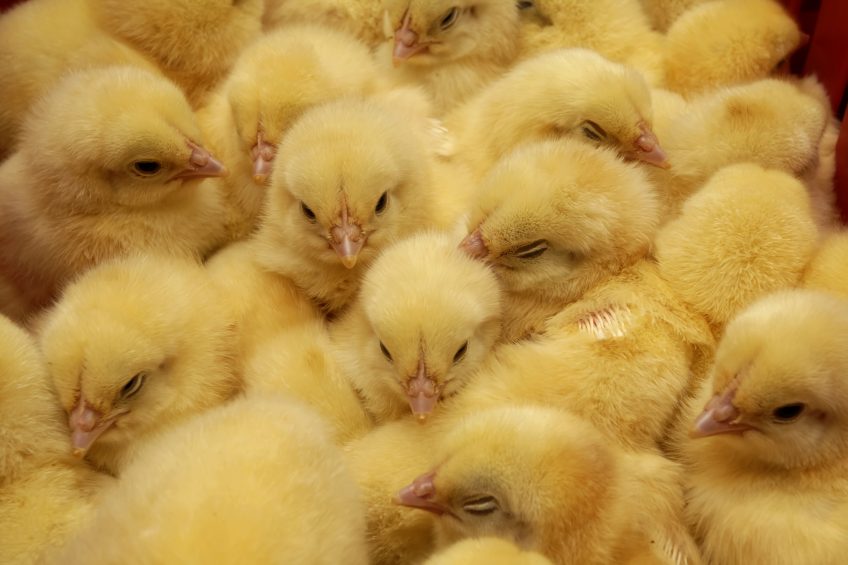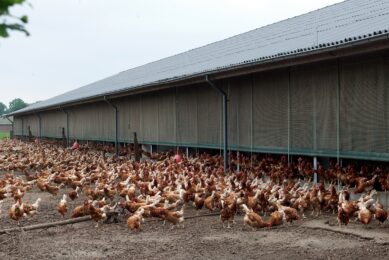The cost of producing poultrymeat across the globe

Earlier this year global animal health company Ceva held a vaccinology summit in Athens, Greece. Poultry World was there.
Broiler production around the globe is becoming more efficient as breeding companies continue to make “more with less”.
Improvements in genetics, rearing conditions and slaughterhouses, allied with cheap labour costs and the ability to get value from other parts of the carcase, are putting some countries at a substantial advantage.
Broiler breast meat is cheapest
French consultant Christian Renault told the Ceva summmit that production of broiler breast meat – based on raw material prices – was cheapest in the Ukraine and Brazil, as they are producers of cereals and oilseed products.
Most European countries are able to produce meat efficiently, although the UK is notably more expensive.
Looking at live costs, Ukraine and Brazil once again were around 50% lower than the EU average at € 0.60-€ 0.61/kg liveweight (lw) compared with Poland (€ 0.86/kg lw), France (€ 0.92), Germany (€ 0.93) and the UK (€ 1.01).
Carcase value – taking into account slaughter costs and yield at slaughter – put Ukraine and Brazil just under € 1/kg compared to the US(€ 1.19/kg), the UK (€ 1.67/kg) and China (€ 1.97/kg).
Ceva audit team works with 60% of world’s hatcheries
Ceva’s C.H.I.C.K. Program now operates in almost two-thirds of hatcheries worldwide. A global initiative being implemented in 40 different countries, the audit system is gaining quality recognition from an independent certification body across the globe. The program has been quality recognised by Bureau Veritas in South Africa, Spain and Turkey, The Philippines, Mexico with other countries, such as Russia, Poland, United Kingdom, Malaysia, with France, The US and China expected to give the green light in the near future.
Paola Cruz-Dousdebes, Ceva Poultry’s global vaccination services manager, said 151 teams now work in 58% of the world’s hatcheries. The teams are a dedicated resource monitoring in-ovo and day-old chick vaccination quality and there is also delivery of continuous training around vaccine storage and handling, preparation, administration quality, equipment maintenance and results monitoring. Jaco Viljoen, chief executive of South African-based Opti Chicks, said the quality stamp of approval had become an “indispensable part of most chick producer’s operations”. “Their strategy is very good… It’s basically a non-negotiable part of the business now,” he explained.
William Boyer, Ceva vaccination programme manager, spoke about the new trends in spray and injection vaccination technologies. Mr Boyer said antibiotics and animal welfare were driving forward innovation in this area, adding that he considered subcutaneous spray safer and more accurate, being fast and reliable. There was a move, he added, to the carousel process, to increase speeds. Use of manual cabinets for spray vaccination was time consuming and operators were needed to deal with the crates – in comparison, in-line spraying systems are more automated. Some hatcheries also use dual spray systems.
Turning to gel applications, Mr Boyer said this was being used in US hatcheries for coccidiosis vaccines and was easy to apply, but the volume and pressure needed to be absolutely right. Vincent Fevrier, from hatchery technology firm Ecat ID, touched on recent innovations in embryonated egg management, and spoke about laser technology, saying the Laser Life candling could detect 100% live and dead embryos as well as detecting rotten and clear eggs. It is able to remove and separate all eggs and sort them into three categories: clear, live and dead. It can also identify which eggs are upside down without having to move them.
Higher welfare requirements
Mr Renault said labour costs remain important factors in determining prices but their impact is diminishing due to the automation of plants around the world, making production costs more homogenised.
He added that European countries are disadvantaged by higher social and environmental regulations as well as higher welfare requirements; factors all driving up overall production costs.
But advances in genetics help offset this expense. Higher slaughter weights, allied to high breast meat yield improve profits.
However, the reliance by many companies on breast meat – the favoured product in Europe, north America and many other nations – means that some firms miss out if they fail to find markets for offal, thighs and feet.
Hatchery vaccination continues to grow in popularity
Vaccination in hatcheries is increasingly replacing field vaccination around the globe. Miren Arbe, Ceva technical manager, told delegates that access to modern vaccination equipment and new technology vaccines meant that an estimated 85% of vaccinations are now taking place in hatcheries compared to 15% in the field.
Commenting on Ceva’s survey of practices at 1,300 hatcheries around the world, Ms Arbe added that 40% of global poultry vaccination was now in-ovo, due to the new generation of vaccines on the market. But the situation is markedly different across the world, with 94% of vaccination in the United States in-ovo, compared to just 30% in Latin America where the majority of vaccination is still done subcutaneously. In Europe, the situation is different in that just over a third of vaccinations take place in the hatchery because of a lack of integration. Subcutaneous vaccination accounts for 37% of the total and the in-ovo rate is rising sharply. More than 20% of birds receive no vaccination in African countries due to the fragmented nature of the market.
For those that do receive vaccines in the region, the subcutaneous method makes up 70% of the total. With labour cheaper and automation lower in Asia, 88% of vaccinations are subcutaneous, although there is a fledgling in-ovo market. “The biggest trend is to move to in-ovo and certainly the larger the hatchery the lower the likelihood of going down the subcutaneous route,” said Ms Arbe. Commenting on the amount of spray vaccination taking place on day-old chicks in hatcheries, Ms Arbe said 90% were using a spray.
Nearly two thirds of these were using cabinet-style equipment, compared to 33% in-line sprayers and 4% who vaccinated through a stop-and-go process. In-line sprayers are most popular in the United States and Europe. “The higher the volume, the more likely it is that in-line sprayers will be used,” she explained. North America leads the way in using gel applications (23%) although the percentage of use around the world was still in single figures.
Low raw material prices
Exchange rates could also have radical effects on competitiveness, he stressed. “Ukraine’s good position relies on their currency depreciation in 2015.
“You can lose in one night 3 to 5 years of company productivity,” he warned.
In conclusion, Mr Renault said the best production costs were to be found in nations where raw material prices were low and where the breeding industry was well organised with good genetics.
Join 31,000+ subscribers
Subscribe to our newsletter to stay updated about all the need-to-know content in the poultry sector, three times a week. Beheer
Beheer











 WP Admin
WP Admin  Bewerk bericht
Bewerk bericht